

panama viejo ruins panama city panama
Located just east of downtown Panama City along the shoreline is Panama Viejo, or the Panama Viejo Historical Monument Complex as it is currently known. The Colonial City, founded by Spanish colonialist Pedrarias Davilá on August 15th, 1519, is the oldest Spanish settlement in the Pacific.
At one time, a thriving city, Panama Viejo benefited from the Portobelo trade fairs and Spain’s great bullion lifeline — shipments were said to pass through Panama en route from Peru’s silver mines to Europe. The city quickly became a primary hub for merchants and landowners, with a population that reportedly reached 10,000 by the mid-17th century. In 1671, Panama Viejo was destroyed during Sir Henry Morgan’s invasion and never rebuilt. It was abandoned for two centuries, during which the city’s location shifted to what is known today as Casco Antiguo.
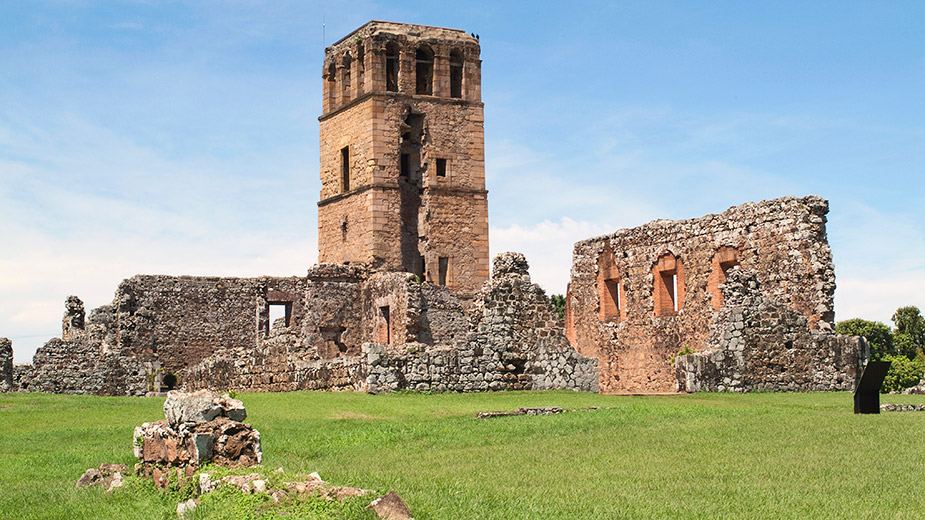
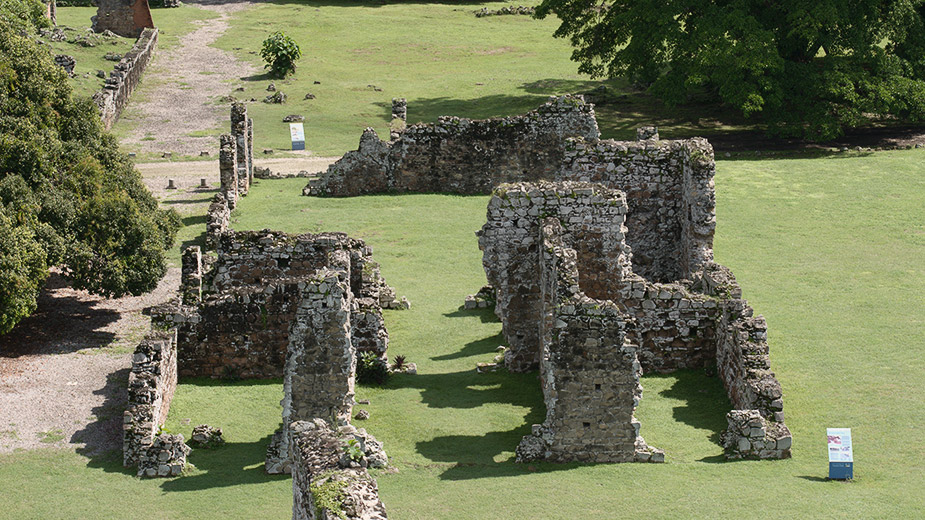
Declared a Historic Site in 1976, the ruins enjoy government protection. Since 1995, Panama Viejo Historical Monument Complex has been administered by the foundation Patronato Panama La Vieja. On July 5th, 2003, the UNESCO World Heritage Committee added the Panama Viejo Archaeological Site to the World Heritage list, joining Forts San Lorenzo and Portobelo.
The ruins at Panama Viejo offer a window into Panama's rich cultural history. They are scattered across 70 acres (28 hectares) and include 19 different historical sites. (You can view the sites on this map, though the site's content is limited to Spanish. Under the illustration is a list of corresponding names.)
Many of Colonial City's most meaningful buildings remain in some form. Most structures are well-preserved and display descriptive text in English and Spanish. While some signs are a bit weathered, you should have no problem reading them. Several ruins, around archways and windows, have been reinforced with red bricks to ensure their structural integrity; the original structures are stone and mortar. So you should have no difficulties differentiating between the two.
The grounds are clean, uncluttered, and manicured, with well-defined walking paths connecting relevant sites, making it easy to move around. The trail is predominantly flat and measures approximately 1 mile (1.6 km) in length. The open areas separating the ruins consists primarily of grass/moss. If you wish to meander through those areas, proceed slowly and with caution because there are a lot of divots and stones concealed under the grass.
Inside the Cathedral is a square steel staircase that leads up to the lookout. There are three levels and platforms, each separated by eight flights of stairs; each flight consists of 5 short steps. Large, open windows on all four sides at each level offer panoramic views of the ruins, museum, and surrounding area, including Panama City. Plaques in English and Spanish reside on the walls at each level with related information.
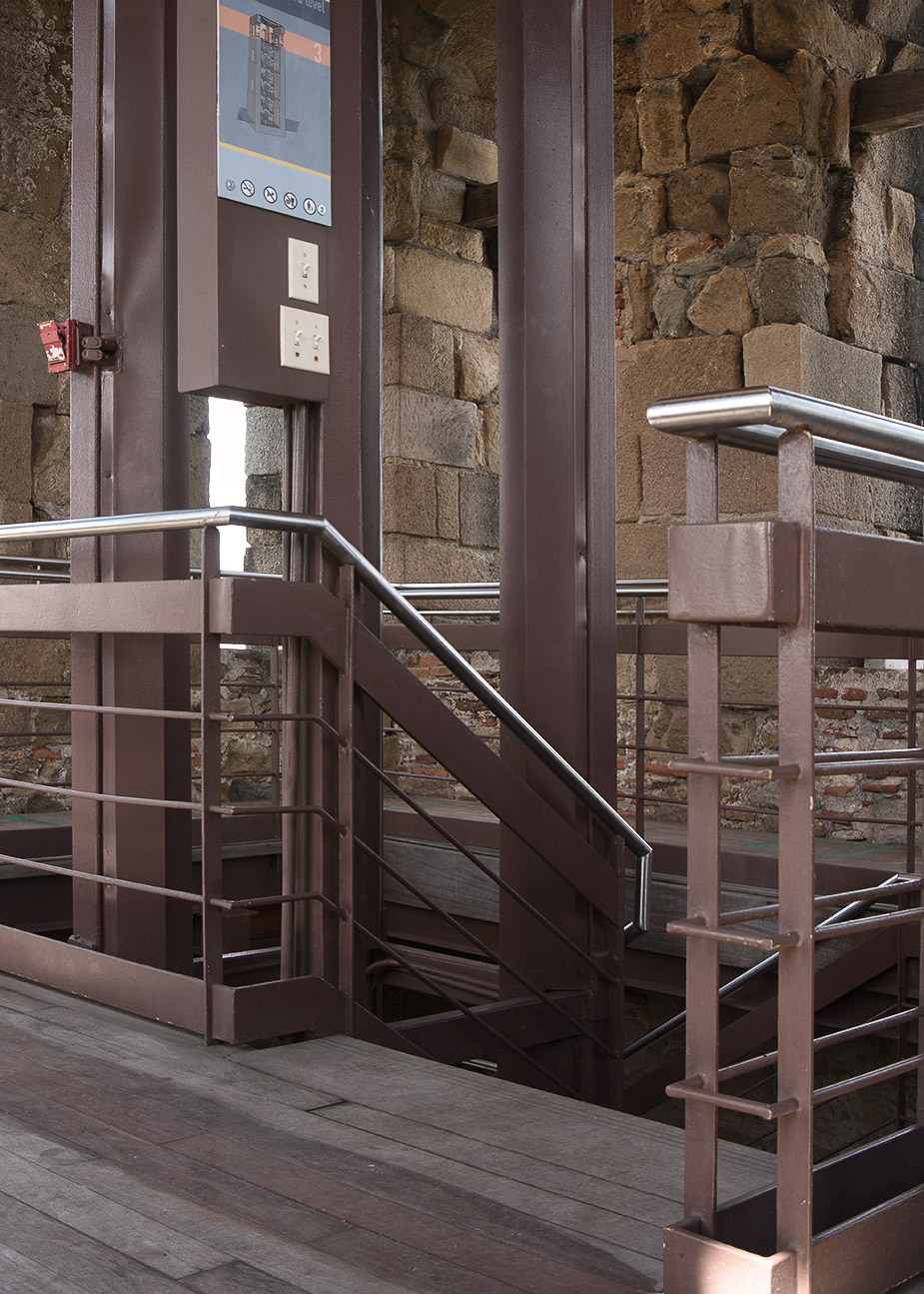
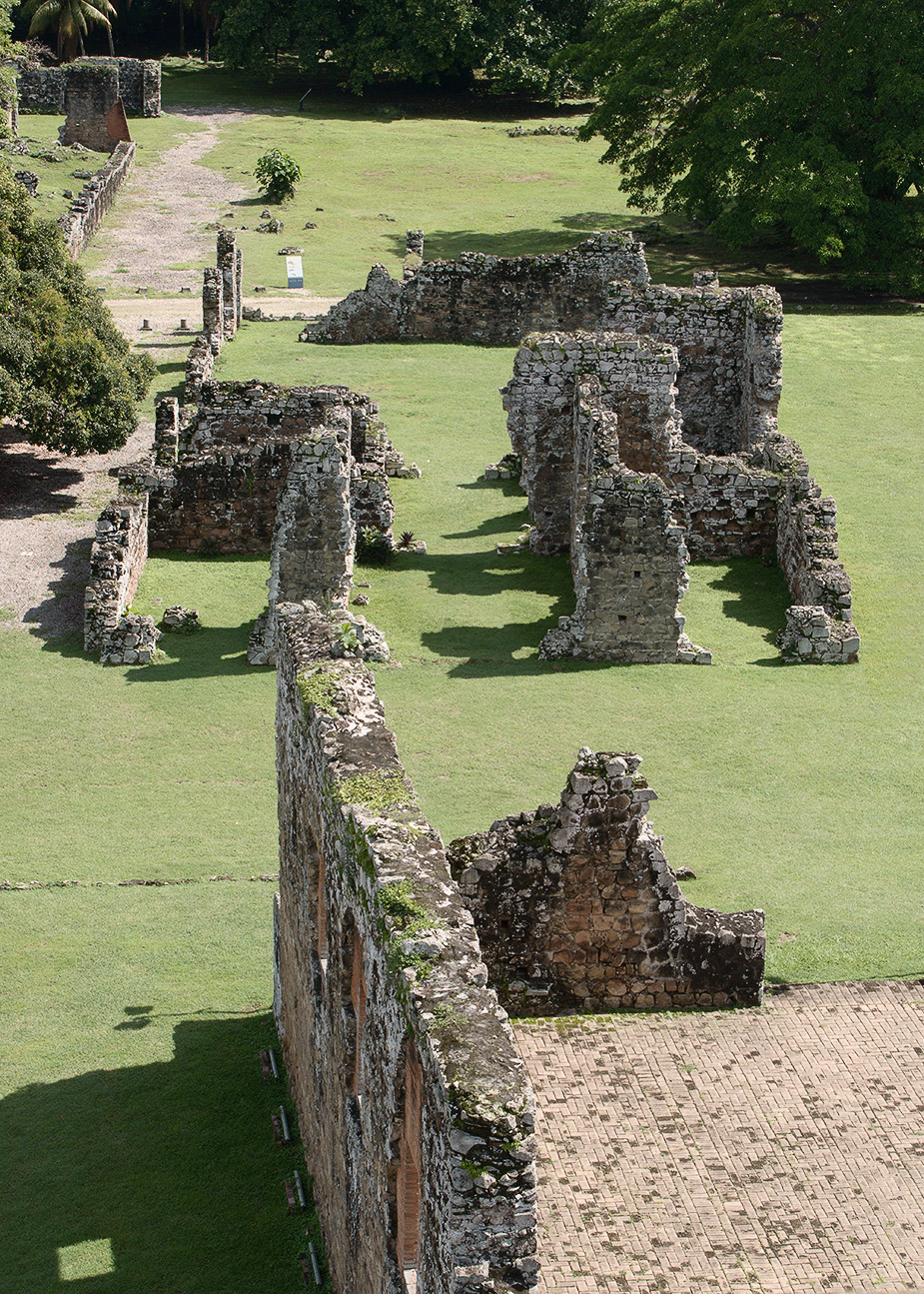
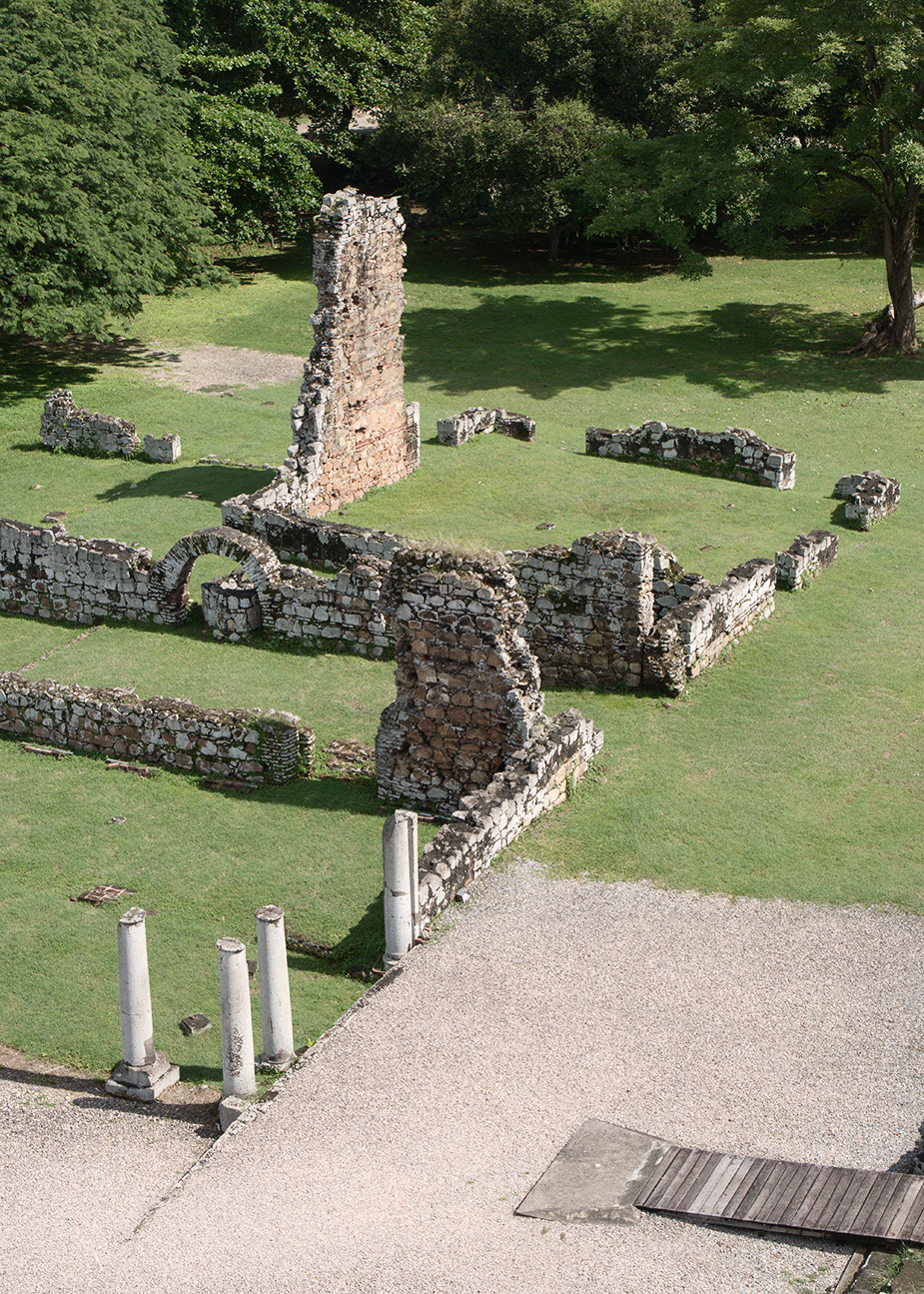
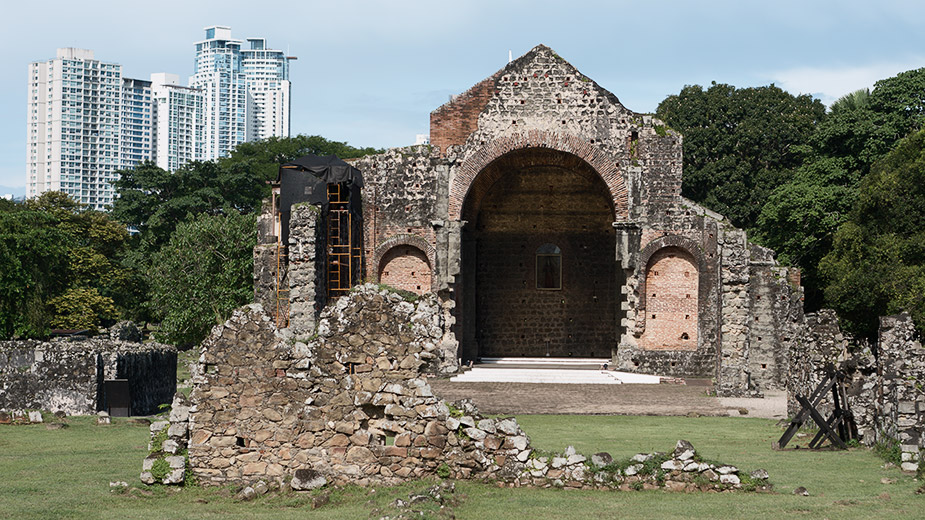
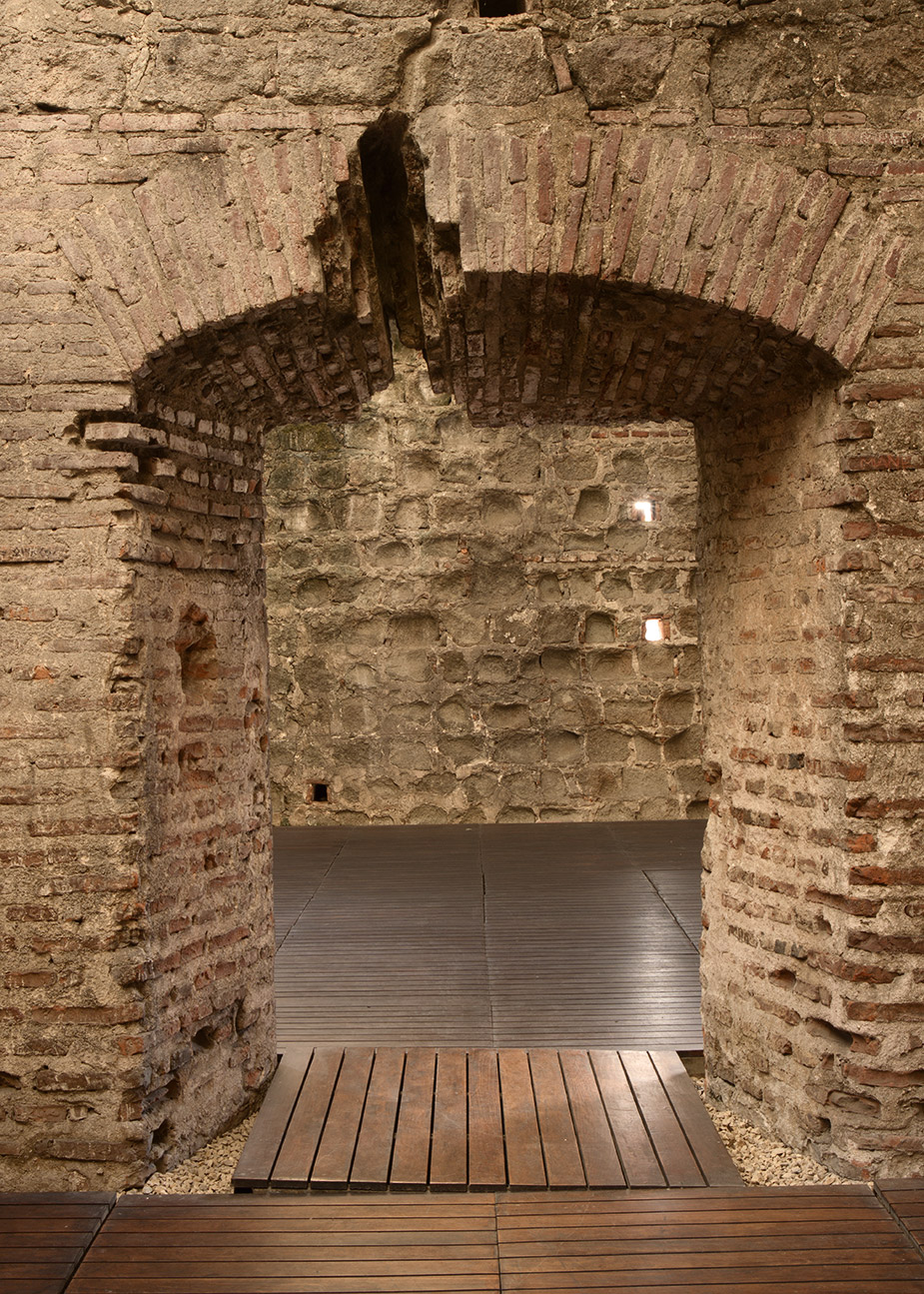
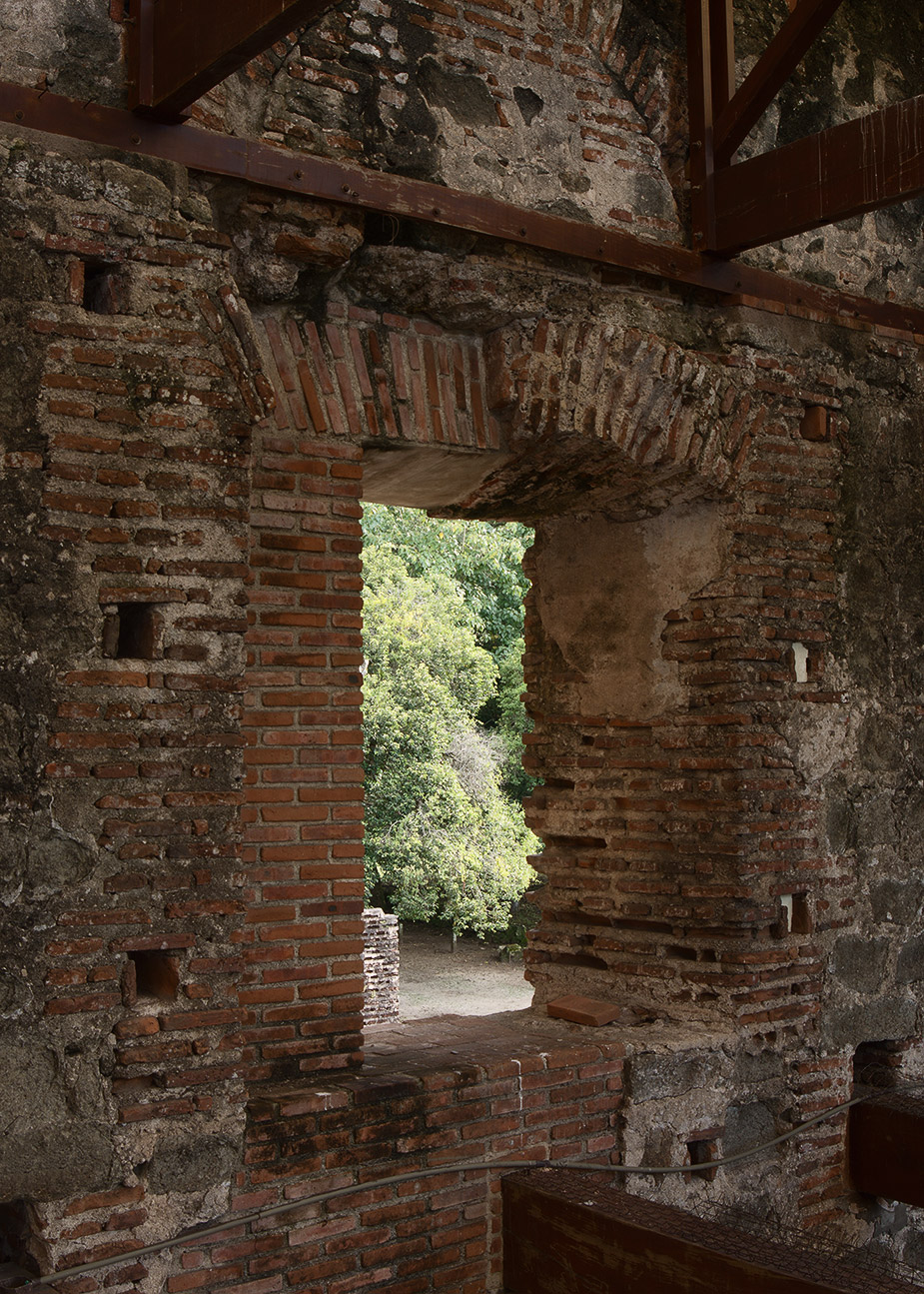
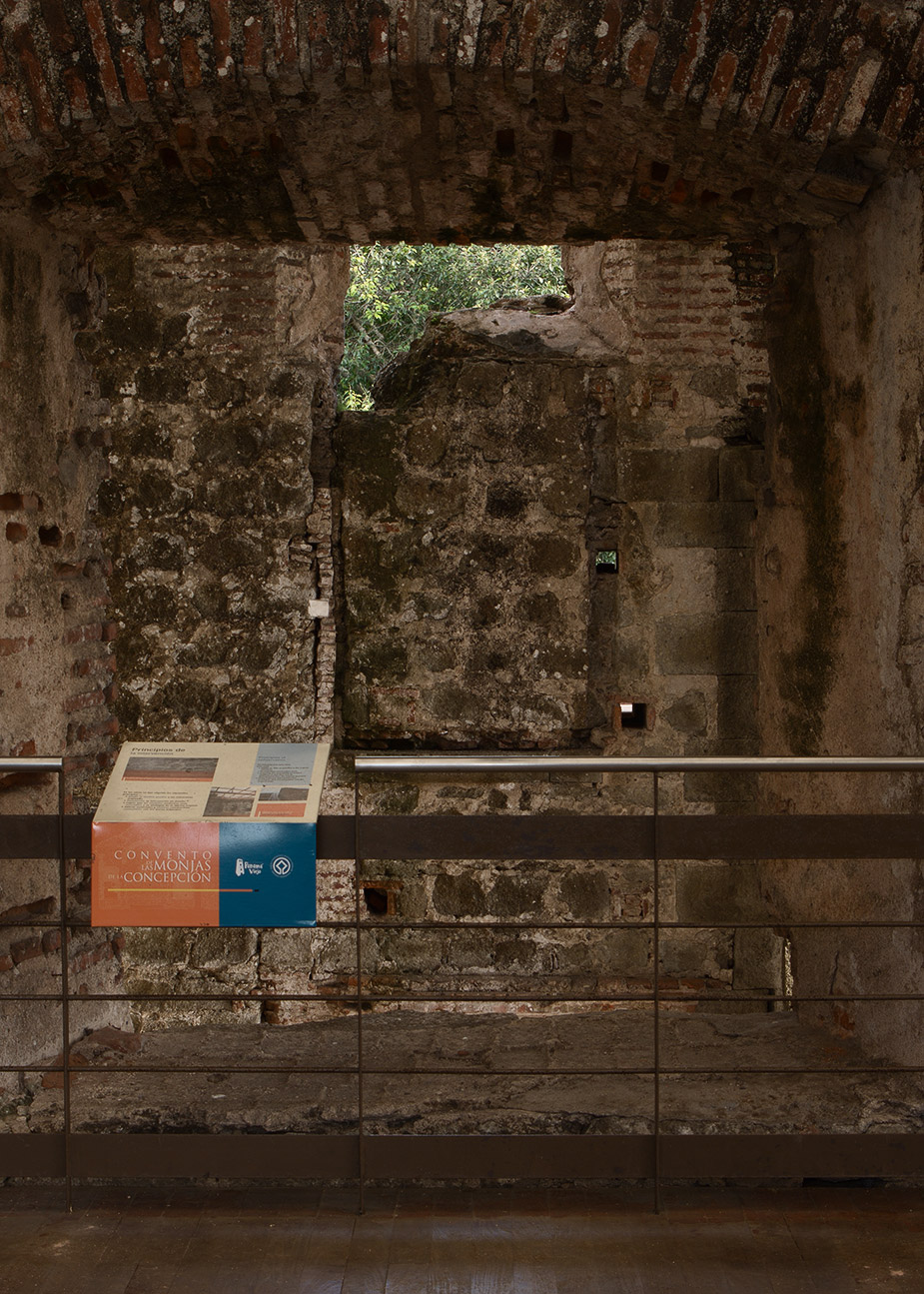
Another building worth mentioning is the "Convento de las Monjas de La Concepción," which lies midway between the entrance and the Cathedral; it's off to the left. Though not as well-preserved as the Cathedral, it is the only other structure in its original form. There are two areas of interest inside the convent. To the right, an entrance leads you into two adjoining rooms. To the left, a staircase leads you upstairs, where you'll encounter better views and several plaques referencing the convent and its restoration. As part of the rehabilitation process, they installed a wooden-plank floorboard and an artificial roof.
The Panama Viejo Museum, or Museo de la Mejor Plaza, resides alongside the Cathedral and contains a wealth of information about the Colonial City and the Isthmuses' first inhabitants. It occupies the building's second floor and is spread out over several open, interconnected rooms, accessed via a semi-circular staircase inside the lobby and left of the ticket counter.
You commence at the top of the stairs with a brief overview of Panama and the Colonial City. There is a map of Panama to the right and, along the left wall, photographs, illustrations, and bilingual text calling attention to the country's strategic significance and contributions. The glass windows along the back wall offer views of the Cathedral and surrounding ruins.
After turning right, you begin with an in-depth review of the city's initial inhabitants dating back 1500 years. Beautiful, authentic ceramic pieces, e.g., dishes, vases, pots, etc., encased in glass enclosures reside along the left wall; many are in surprisingly good shape, given their age. To the right are depictions, descriptive text, and artifacts housed in glass cabinets.
You then return to the period between 1516-1519, during the European expeditions. A detailed map highlights the many routes taken, and the accompanying text delves into the individuals associated with those campaigns. Then, during the latter half of the 16th century, Panama Viejo secured its position as a strategic point of transit. The city was founded by Spanish colonialist Pedrarias Davilá on August 15th, 1519, making it the oldest Spanish settlement in the Pacific. Panama Viejo quickly became a primary hub for merchants and landowners, with a population that reportedly reached 10,000 by the mid-17th century.
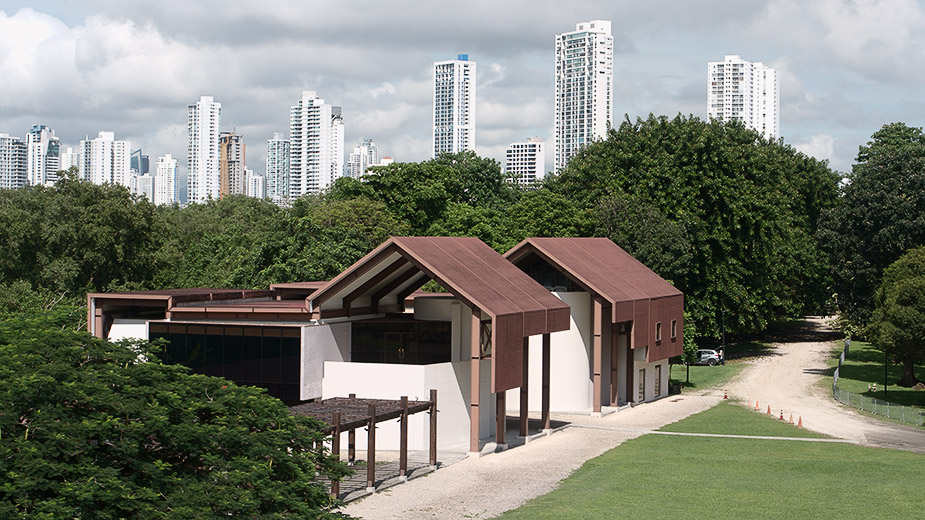
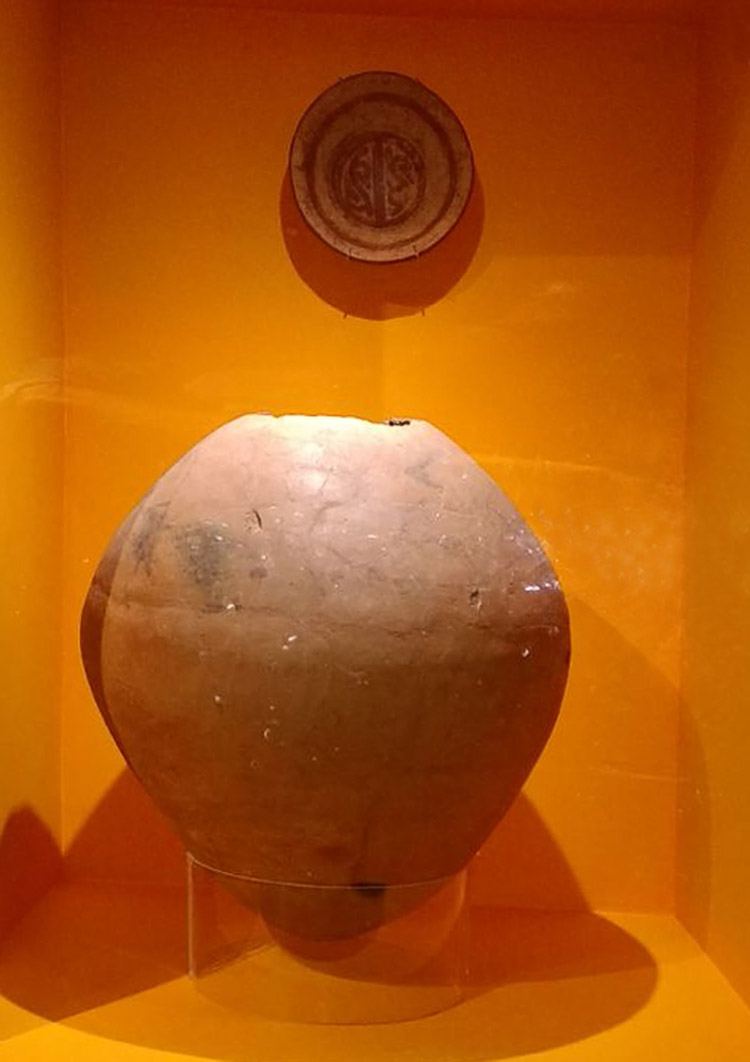
Moving forward, you'll enter the museum's largest room, which contains a detailed reproduction of Panama Viejo during the 17th century. Interactive buttons evenly spaced around the perimeter allow you to identify the city's primary structures. Along the right wall, several small exhibits highlight the construction techniques deployed during that period and the building materials used. Exhibitions along the left wall showcase hand-made instruments and tools, and pottery. Drawings and a timeline help chronicle events. All of the items presented are authentic; none of them are imitations.
You'll then revisit the destructive period that led to Panama Viejo's ransacking in 1671 at the hands of the famous pirate, Captain Henry Morgan. After the invasion, the city was abandoned for two centuries and never rebuilt. The city's location shifted to what is known today as Casco Antiguo; a timeline of events with supporting illustrations is displayed. It's all very intriguing and represents a crucial period in Panama's development.
Towards the back and left is a closed-door exhibit filled with Colonial Era Religious Art. Adjacent to it — the right —is another that focuses on the Colonial era home with many artifacts and trinkets.
A flight of steps takes you downstairs to the Souvenir Shop, which isn't very large. I was surprised and confused by the souvenirs they sell; only a few relate to the Colonial City. The rest are generic items — stuffed animals, folding hand fans, plates, glasses, cups, etc. — with no relation to Panama Viejo or the country of Panama. Aside from t-shirts, postcards, and a few other select items, I didn't see much to purchase.
Overall, the museum is excellent. The exhibitions are first-rate, and the vast array of authentic artifacts is very well presented.
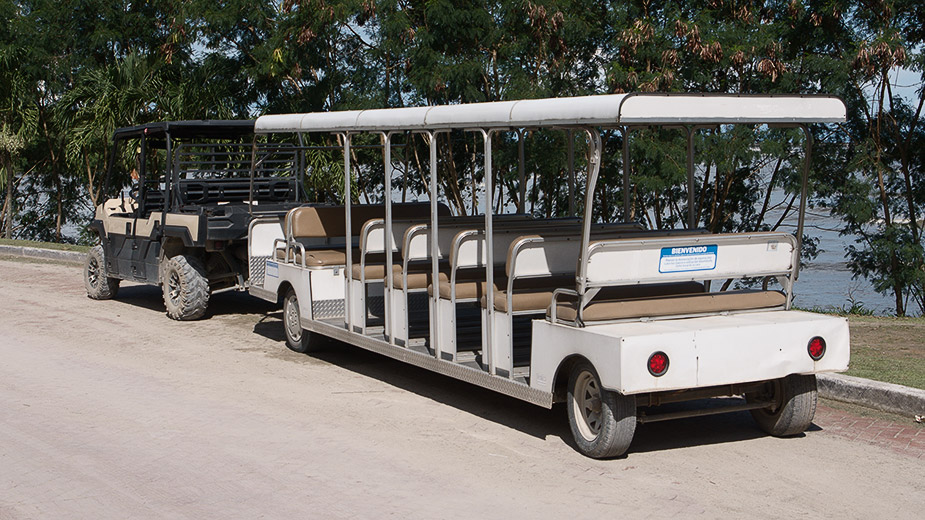
The path from the entrance to the Cathedral consists of a flat, gravel/pebble road, and it takes just 5-10 minutes to reach the Cathedral. For those who prefer not to walk, the museum provides a complimentary shuttle service in what resembles an open golf cart that accommodates 16-20 people. The seating is spacious and comfortable, with padded seats. You can hop on and off at any time; it is in perpetual motion, ferrying visitors between the entrance and the Cathedral. There is no minimum number of visitors required. Even if you arrive alone, the shuttle service will accommodate you. It is a short, pleasant ride that lasts just a few minutes.
To the right and before the ticket window — near the main road — is a two-story souvenir center where vendors of indigenous descent sell arts and crafts. In all likelihood, your excursion will include a visit there. I have, on several occasions, seen large tour buses parked out front. Immediately following the ticket office, to the left, is a bookstore/library.
All Metro buses that read" Panama Viejo" pass by the ruins. They depart regularly from the Albrook Bus Terminal, and their route takes them along the Cinta Costera and in front of Punta Paitilla. You will want to get off at the Coco Bay bus stop, just before the entrance. From there, it is a short walk. To return to the Cinta Costera or Albrook Bus Terminal, you need to cross the street at the corner/curve — to the left of the ticket window when departing — and take any bus that reads "Albrook."